How to Emotionally Support Your Customers Through Content
 Your customers make 35,000 decisions each day, and emotions play a role in a staggering 90% of their day. This means there’s major overlap, and the bulk of those decisions are made when your customers are emotional.
If you’re not prioritizing your customers' emotions in all of your content creation, you're potentially making most of their decisions (say, 31,500 of them) harder than they have to be — including the one where they choose, or don't choose, your brand.
Here's why emotionally supporting your customers through content isn't just good practice; it’s vital for impacting your target audience’s buying decisions, and, ultimately, your bottom line. More importantly, how to do it the right way.
Your customers make 35,000 decisions each day, and emotions play a role in a staggering 90% of their day. This means there’s major overlap, and the bulk of those decisions are made when your customers are emotional.
If you’re not prioritizing your customers' emotions in all of your content creation, you're potentially making most of their decisions (say, 31,500 of them) harder than they have to be — including the one where they choose, or don't choose, your brand.
Here's why emotionally supporting your customers through content isn't just good practice; it’s vital for impacting your target audience’s buying decisions, and, ultimately, your bottom line. More importantly, how to do it the right way.
Why Are Emotions so Important in Your Business?
If you think emotions are a casual afterthought in your audience’s buying decisions, think again. When used proactively, you can use emotional marketing to steer both your prospective and current customers to become loyal, lifetime fans of your brand. Why are emotions so powerful? Simply put, they impact your decisions — big and small. As for how decisions are influenced, here’s a quick synopsis of what happens in your brain. You have three brains: the lizard brain, the emotional brain, and the rational brain.- Your emotional brain is responsible for your limbic system and wins more arguments than your rational brain.
- Your lizard brain, the brain way under and older than the emotional brain, triggers fight-or-flight mode and wins even more.
- Your rational brain is there to justify the decisions of the other two — like a wingman, but it’s not really responsible for making them.
 Interaction Design Foundation
On the frontend of your marketing strategy, you can use emotional marketing to help connect with your target audience’s emotional brain and persuade them to make a purchase.
In fact, one study of 1,400 ad campaigns found that ads with purely emotional content performed twice as well ( i.e. 31% vs. 16% ) as ads with only rational content.
Interaction Design Foundation
On the frontend of your marketing strategy, you can use emotional marketing to help connect with your target audience’s emotional brain and persuade them to make a purchase.
In fact, one study of 1,400 ad campaigns found that ads with purely emotional content performed twice as well ( i.e. 31% vs. 16% ) as ads with only rational content.
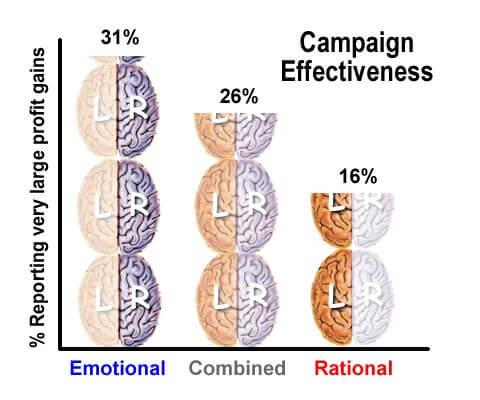 Neuromarketing
After they convert, you can tap into your customer’s emotions and support them during their user experience (UX).
After all, there’s a lot riding on a good customer experience, given that 32% of customers would leave a brand they love after just one bad customer experience.
How’s that for brand loyalty?
Neuromarketing
After they convert, you can tap into your customer’s emotions and support them during their user experience (UX).
After all, there’s a lot riding on a good customer experience, given that 32% of customers would leave a brand they love after just one bad customer experience.
How’s that for brand loyalty?
32% of customers would leave a brand they love after just one bad customer experience.
Click To Tweet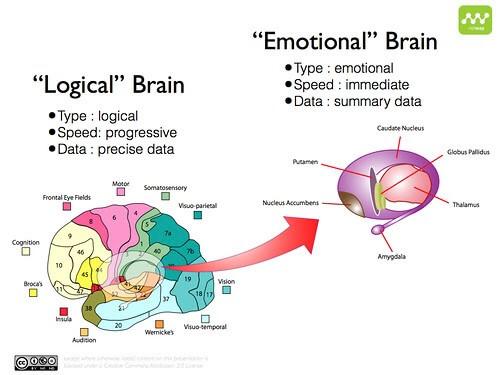 Source
The point here is you can make a strong emotional connection with anyone who comes in touch with your brand — whether prospective, new, or repeat customers — so it’s worth hitting on the right ones, which will ultimately contribute to your bottom line.
As for making an emotional connection with your target audience the right way, here’s how to do it.
Source
The point here is you can make a strong emotional connection with anyone who comes in touch with your brand — whether prospective, new, or repeat customers — so it’s worth hitting on the right ones, which will ultimately contribute to your bottom line.
As for making an emotional connection with your target audience the right way, here’s how to do it.
5 Ways to Emotionally Support Your Customers Through Content
Your content shouldn’t just be about getting your point across and promoting your business, products, or services. You should be able to connect with your customers on a personal level and make them feel heard and understood. Here are some ideas on how to do so.Actively Listen and Create Space to Be Heard
Whether it’s new visitors to your site or returning loyal customers, you can support your audience through the content in your live chat conversations. To make an emotional connection, first and foremost, provide a space for your contacts to be heard. In other words, allow them to vent and don’t forget to really listen. Let your target audience know their point of view matters. Sadly, this isn’t the norm. In fact, people dedicate only about 55% of their time to listening. This makes sense, considering the average person hears between 20,000 and 30,000 words within a 24-hour period. Needless to say, we indulge in the daily bad habit of not truly listening. Sure, it’s not realistic to solve the world’s problems through a live chat, but you can make an emotional connection with your target audience by letting them express their emotions. Even if it’s a simple chatbot prompt, like this chat message that asks how their site visitors feel.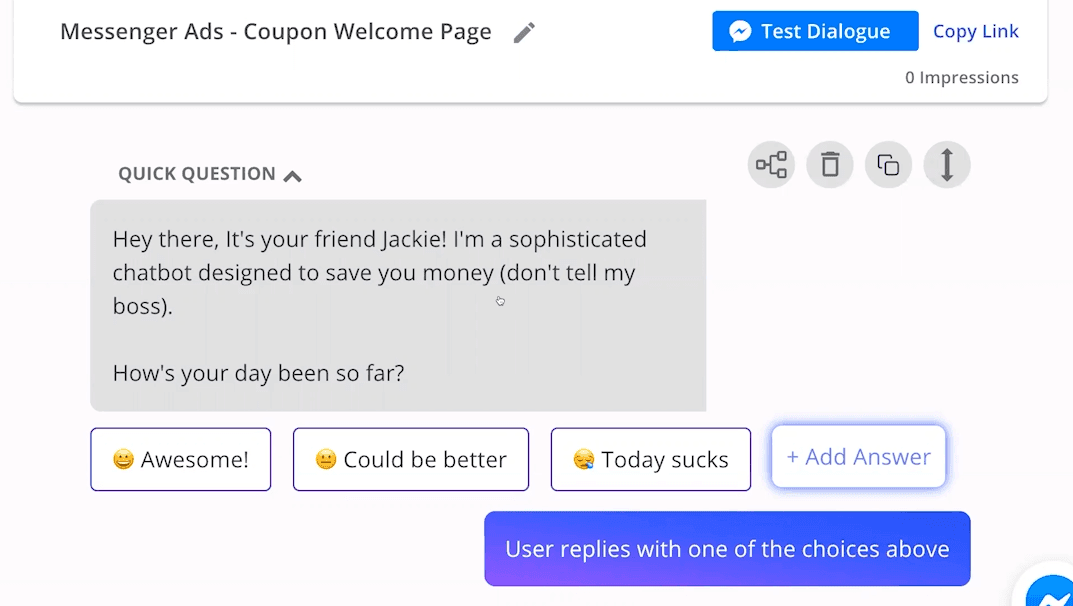 Mobile Monkey
Emojis and all, it immediately puts the conversation into an emotional context, which opens the door for people to trust you with their problem.
To make the right emotional connection with your live chat visitors, use positivity and supportive phrasing as you engage in chats.
REVE Chat, for instance, recommends using affirmative words to help create a positive customer experience, like:
Mobile Monkey
Emojis and all, it immediately puts the conversation into an emotional context, which opens the door for people to trust you with their problem.
To make the right emotional connection with your live chat visitors, use positivity and supportive phrasing as you engage in chats.
REVE Chat, for instance, recommends using affirmative words to help create a positive customer experience, like:
- Great
- Wonderful
- Excellent
- Absolutely
- Awesome
- Amazing
- Certainly
- Definitely
- Fantastic
- “Let me check that I have this right…”
- “Let me see if I have this correct, you want me to…” or “You would like for me to…?”
- “If I understand you correctly…”
- “You are saying that… correct?”
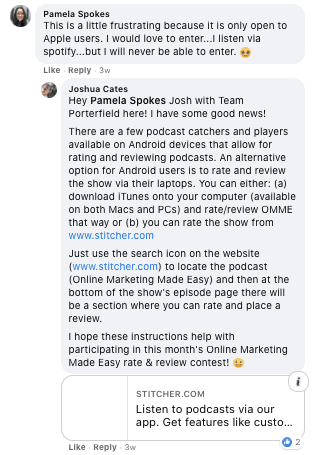 Facebook
After learning about a target audience member’s problem accessing Amy’s podcast episode, Joshua sent over a helpful piece of content in the form of a resource link.
The main takeaway is, regardless of the channel, provide a space for your target audience to be heard and use that to inform your content creation. After all, your target audience (including their emotions) should be at the heart of your business.
If you use our next tip correctly, it’s a big indicator that you’re listening to your target audience.
Facebook
After learning about a target audience member’s problem accessing Amy’s podcast episode, Joshua sent over a helpful piece of content in the form of a resource link.
The main takeaway is, regardless of the channel, provide a space for your target audience to be heard and use that to inform your content creation. After all, your target audience (including their emotions) should be at the heart of your business.
If you use our next tip correctly, it’s a big indicator that you’re listening to your target audience.
Regardless of the channel, provide a space for your target audience to be heard and use that to inform your content creation.
Click To TweetReflect Your Customer’s Exact Language Back to Them
Another way to emotionally support your customers through content is to use your target audience’s exact language and phrasing in your content. What’s the best source for gathering their verbiage? Your target audience, of course. Whether it’s in first-hand conversations or through secondary research methods, doing remarkable customer research can make all the difference in your business. It’s a way to gather a key list of repeat words, phrases, and issues that come up often from your target audience. If you’re going the secondary research route — as in, social listening or combing through conversations in relevant online forums, like Reddit or Facebook Groups — you can find a ton of comments by looking up your threads and groups based on your niche topic. Let’s say you’re in the personal development niche, for example. A quick query for “personal development” in Amazon Books turns up over 80,000 results for reviews and verbiage from your target audience.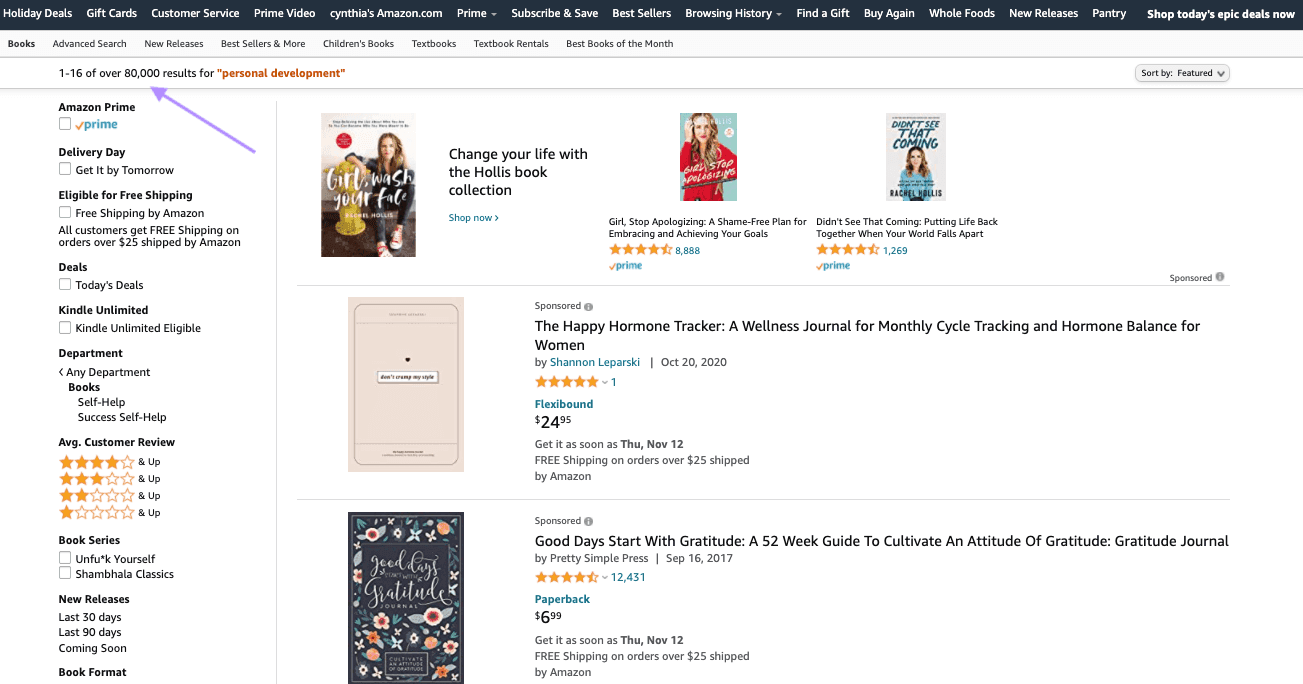 Amazon
Once you’ve gathered your verbiage database, the next step is to organize your data into pain points and relief points.
When content creation time comes, you can pull verbiage from your list and reflect your target audience’s exact language back to them.
As marketing queen, Amy Porterfield, puts it:
Amazon
Once you’ve gathered your verbiage database, the next step is to organize your data into pain points and relief points.
When content creation time comes, you can pull verbiage from your list and reflect your target audience’s exact language back to them.
As marketing queen, Amy Porterfield, puts it:
 One thing to pay attention to as you’re deciding which phrases to use in your copy is their stage of awareness, which include these five stages:
One thing to pay attention to as you’re deciding which phrases to use in your copy is their stage of awareness, which include these five stages:
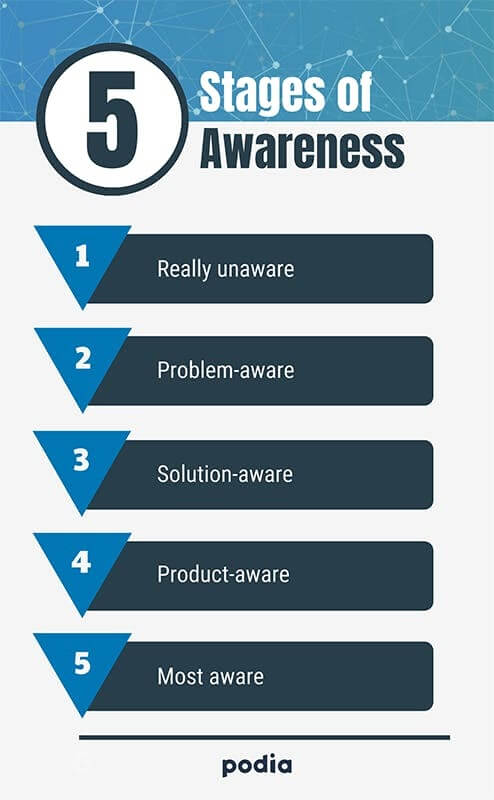 Podia
This is something that copywriting guru and Copyhackers founder, Joanna Wiebe, uses. It’s a useful way to put yourself in your recipient’s shoes, so you can write specific content for their stage of the awareness funnel.
Even if it’s past the awareness stages, and you’re creating content for your converted customers, you can use your target audience’s language and phrasing in customer support content, too.
Just use their exact language when creating helpful support content, like guides, tutorials, or even in onboarding emails.
Content creation formats aside, when you use your target audience’s exact language, it shows that you’re carefully taking inventory of their needs and concerns, which makes you come off as authentic in wanting to help solve their problems.
Considering the fact that 57% of consumers think that less than half of brands do content creation authentically, this tactic can help you stand out from the norm.
Podia
This is something that copywriting guru and Copyhackers founder, Joanna Wiebe, uses. It’s a useful way to put yourself in your recipient’s shoes, so you can write specific content for their stage of the awareness funnel.
Even if it’s past the awareness stages, and you’re creating content for your converted customers, you can use your target audience’s language and phrasing in customer support content, too.
Just use their exact language when creating helpful support content, like guides, tutorials, or even in onboarding emails.
Content creation formats aside, when you use your target audience’s exact language, it shows that you’re carefully taking inventory of their needs and concerns, which makes you come off as authentic in wanting to help solve their problems.
Considering the fact that 57% of consumers think that less than half of brands do content creation authentically, this tactic can help you stand out from the norm.
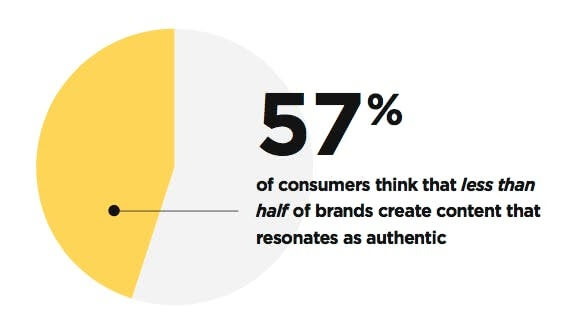 Social Media Today
In a nutshell, investigate the language your target audience uses by doing your due diligence and conducting research. Find recurring patterns in the words they use, and use your target audience’s exact language in your content creation.
This will help you tell a story in which your target audience can relate. Maybe more important, tell the kind of stories they need to hear — which is our next tip.
Social Media Today
In a nutshell, investigate the language your target audience uses by doing your due diligence and conducting research. Find recurring patterns in the words they use, and use your target audience’s exact language in your content creation.
This will help you tell a story in which your target audience can relate. Maybe more important, tell the kind of stories they need to hear — which is our next tip.
Leverage the Power of Storytelling
Another powerful way to capture your audience’s emotional connection and impact their buying decisions is to use compelling stories that also reflect back their emotions. From pain points to the moment of relief, try to tap into your target audience’s emotions at every stage of the story. This can be a super powerful way to connect with your audience, given that messages delivered as stories are up to 22x more memorable than facts.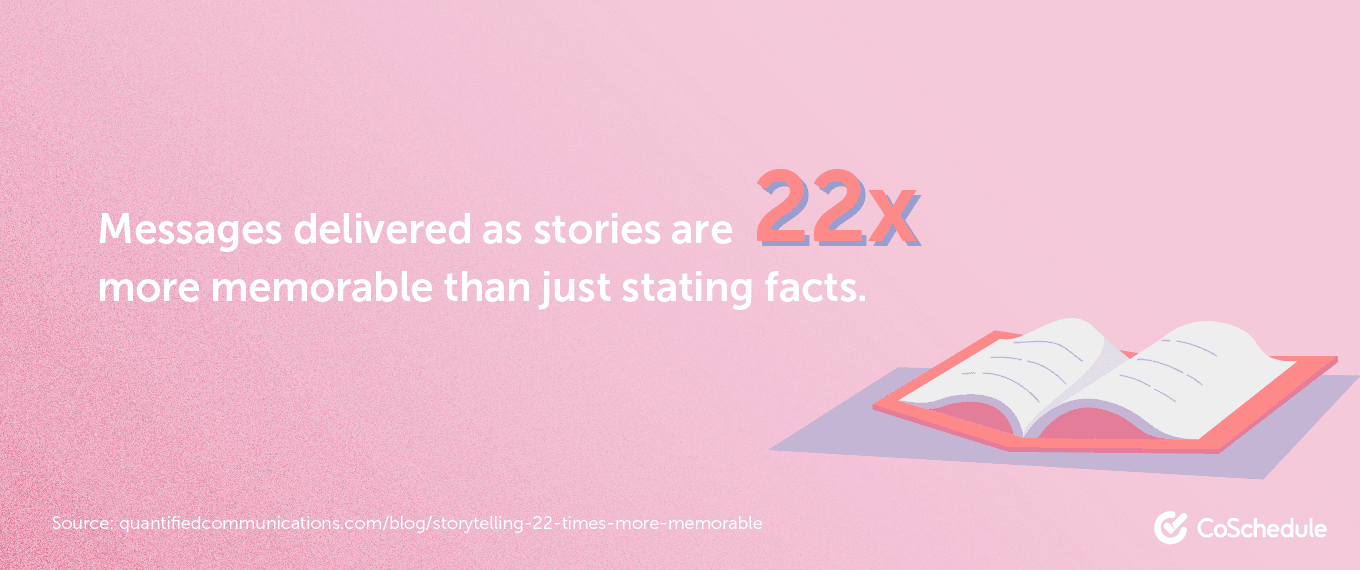 For a skeleton storytelling framework to follow, consider the classic narrative arc, which goes something like this:
For a skeleton storytelling framework to follow, consider the classic narrative arc, which goes something like this:
- Setting and characters
- Tension and conflict
- Climax
- Resolution
- New normal
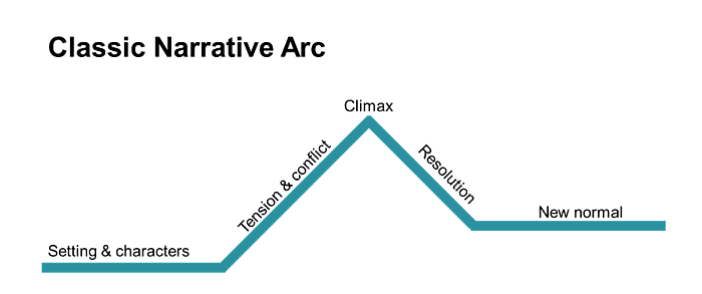 Reedsy Blog
The “new normal” being, of course, highlighting the positive emotions that come with partaking in your offer.
Of all the emotional marketing strategies, storytelling is one that’s very effective in eliciting an emotional response from your target audience.
Reedsy Blog
The “new normal” being, of course, highlighting the positive emotions that come with partaking in your offer.
Of all the emotional marketing strategies, storytelling is one that’s very effective in eliciting an emotional response from your target audience.
Of all the emotional marketing strategies, storytelling is one that’s very effective in eliciting an emotional response from your target audience.
Click To Tweet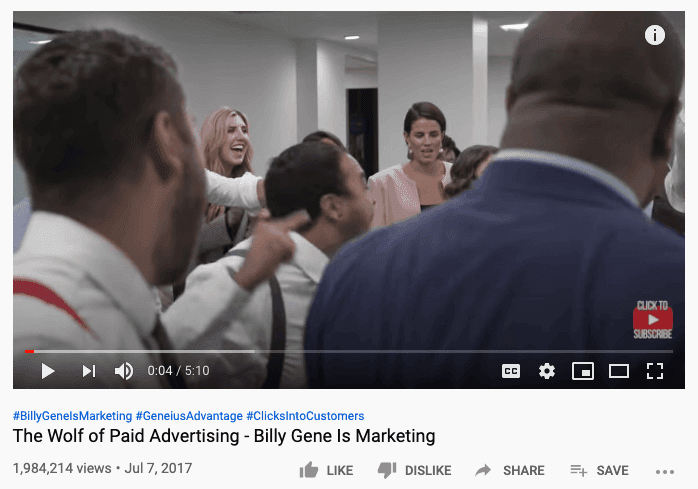 YouTube
Of course, your storytelling doesn’t have to be as dramatic as Billy Gene’s, and your digital marketing content doesn’t have to be in video format, either.
Storytelling can be used in your pocket of copywriting skills, too.
Just check out how well Joanna Wiebe lays out the storyline plot at the top of her 10x Emails sales page, selling her online course.
YouTube
Of course, your storytelling doesn’t have to be as dramatic as Billy Gene’s, and your digital marketing content doesn’t have to be in video format, either.
Storytelling can be used in your pocket of copywriting skills, too.
Just check out how well Joanna Wiebe lays out the storyline plot at the top of her 10x Emails sales page, selling her online course.
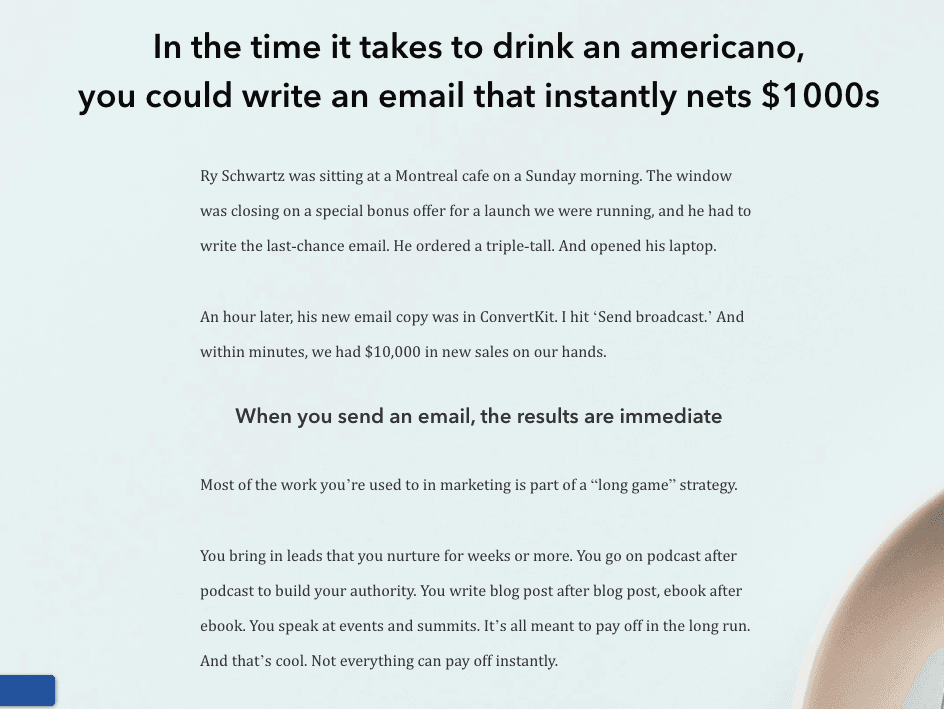 10x Emails
From her headlines to her description, she uses storytelling to move you from a “Montreal café on a Sunday morning” scene, to planning, writing, and optimizing “emails that get results worth bragging about.”
The storytelling evokes an emotional response of relief and positivity in the end. If you’re trying to convert new customers, yours should do the same.
10x Emails
From her headlines to her description, she uses storytelling to move you from a “Montreal café on a Sunday morning” scene, to planning, writing, and optimizing “emails that get results worth bragging about.”
The storytelling evokes an emotional response of relief and positivity in the end. If you’re trying to convert new customers, yours should do the same.
Use Emotionally Supportive Colors and Imagery
This one’s more of a subliminal layer, but it’s also a powerful way to evoke the right emotional response from your visual content. Use color psychology to trigger positive emotions from your audience. If you’re wondering how colors impact emotional response and buying decisions, look to colorology, which is basically a list of emotions evoked by colors. This includes:- Red: action, energy, passion, warmth, intensity, bold
- Orange: happy, energetic, stimulation, pleasure, warmth
- Yellow: positivity, fun, happiness, laughter, cheer, frustration
- Green: natural, money, health, envy, prosperity, luck
- Blue: trust, power, loyal, success, purpose, calmness, cold
- Purple: royalty, wealth, wise, respect, mystery, success
- Pink: creativity, femininity, intuition, gratitude, love, romance
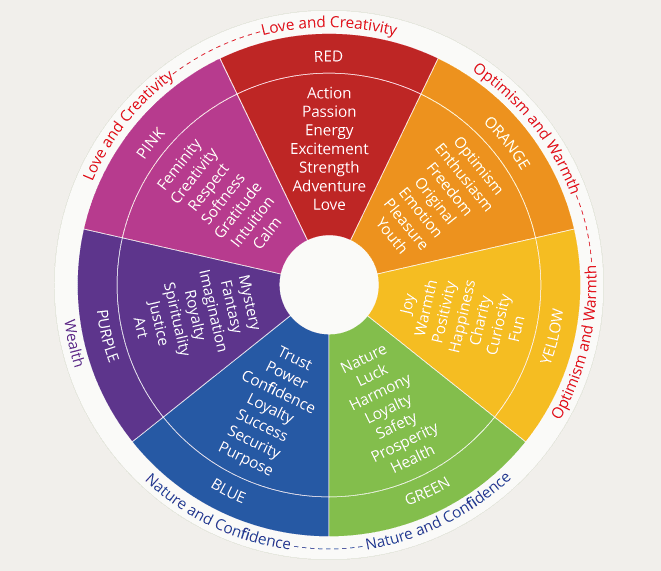 Swift Publisher
These associations vary a bit across sources and definitely by cultures. The tactical tip here is to use the colors of the emotions that you want to portray in your content.
Beyond colors, it’s also important to consider the emotional weight behind images during your content creation.
Ask yourself, “Am I using images that evoke relevant emotions to my target audience within their awareness stage?”
For instance, you can evoke a sense of wonder with animation or scenic imagery, like this Instagram video post by TravelAwesome.
Swift Publisher
These associations vary a bit across sources and definitely by cultures. The tactical tip here is to use the colors of the emotions that you want to portray in your content.
Beyond colors, it’s also important to consider the emotional weight behind images during your content creation.
Ask yourself, “Am I using images that evoke relevant emotions to my target audience within their awareness stage?”
For instance, you can evoke a sense of wonder with animation or scenic imagery, like this Instagram video post by TravelAwesome.
 Instagram
Positive emotions, like joy, can be created with images of happy and smiling people, like in this Warby Parker Instagram post.
Instagram
Positive emotions, like joy, can be created with images of happy and smiling people, like in this Warby Parker Instagram post.
 Instagram
The same concept applies to all your visual content, regardless of the format or channel distribution. Given that the brain processes images 60,000 times faster than words, it’s vital that your imagery and colors are making the right emotional connection with your target audience.
This will help bolster the point you’re trying to get across with words in your copy — just like our final content marketing pointer.
Instagram
The same concept applies to all your visual content, regardless of the format or channel distribution. Given that the brain processes images 60,000 times faster than words, it’s vital that your imagery and colors are making the right emotional connection with your target audience.
This will help bolster the point you’re trying to get across with words in your copy — just like our final content marketing pointer.
Highlight Social Proof in Your Content
Our final tip today is to center your content creation around social proof. Regardless of the format, if your audience feels an emotional connection to other customers who have “been there” and “done that”, they’ll feel reassured they can also achieve the desired outcome by using your product. It’s no wonder a staggering 92% of customers read online reviews before they make buying decisions.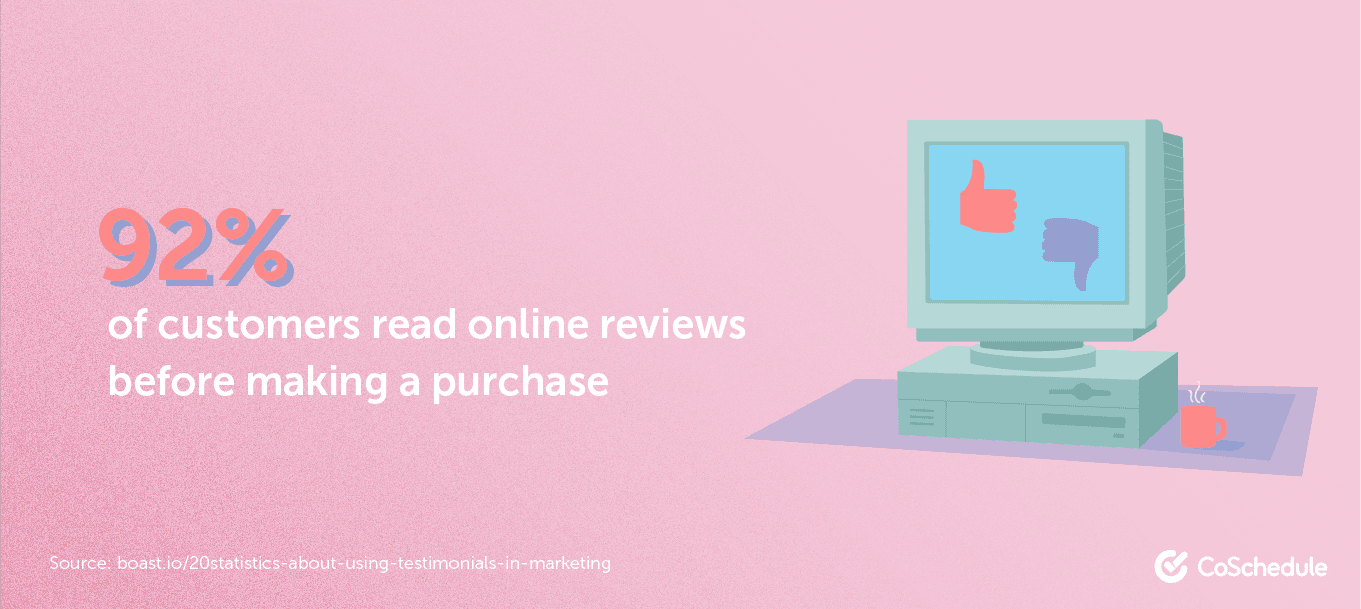 It’s also no surprise that customer testimonials score the highest in effectiveness for content marketing, at 89%.
It’s also no surprise that customer testimonials score the highest in effectiveness for content marketing, at 89%.
 Spectoos
The point is to feature testimonials and reviews wherever possible and appropriate, whether it’s directly on your site, like at the bottom of Billy Gene Is Marketing’s homepage:
Spectoos
The point is to feature testimonials and reviews wherever possible and appropriate, whether it’s directly on your site, like at the bottom of Billy Gene Is Marketing’s homepage:
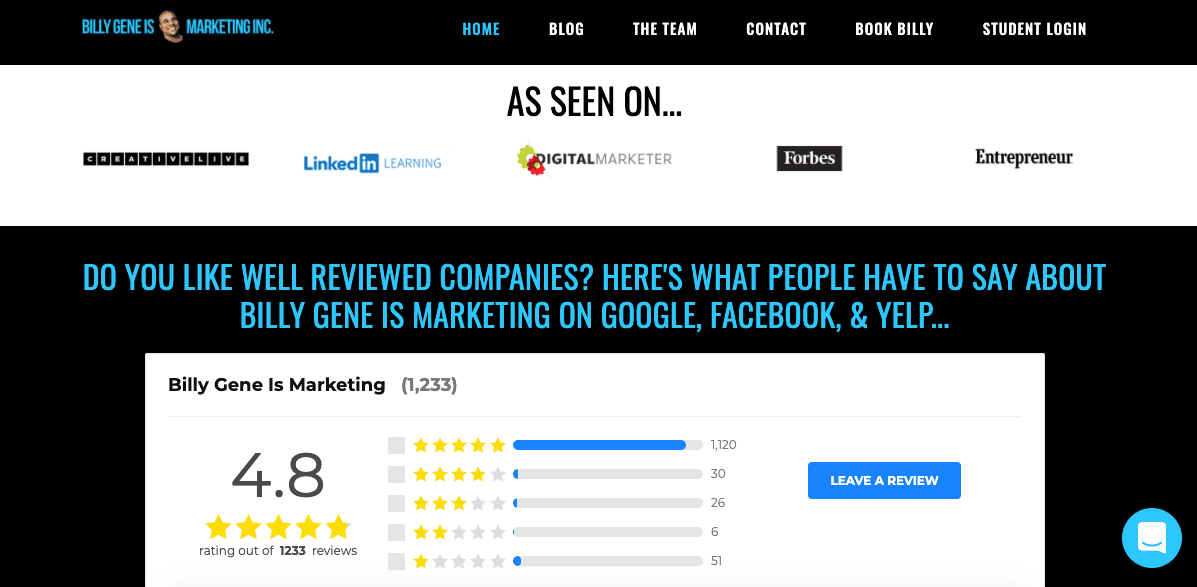 Billy Gene Is Marketing
Or on a podcast page, like this one on Amy Porterfield’s podcast page below episode #266:
Billy Gene Is Marketing
Or on a podcast page, like this one on Amy Porterfield’s podcast page below episode #266:
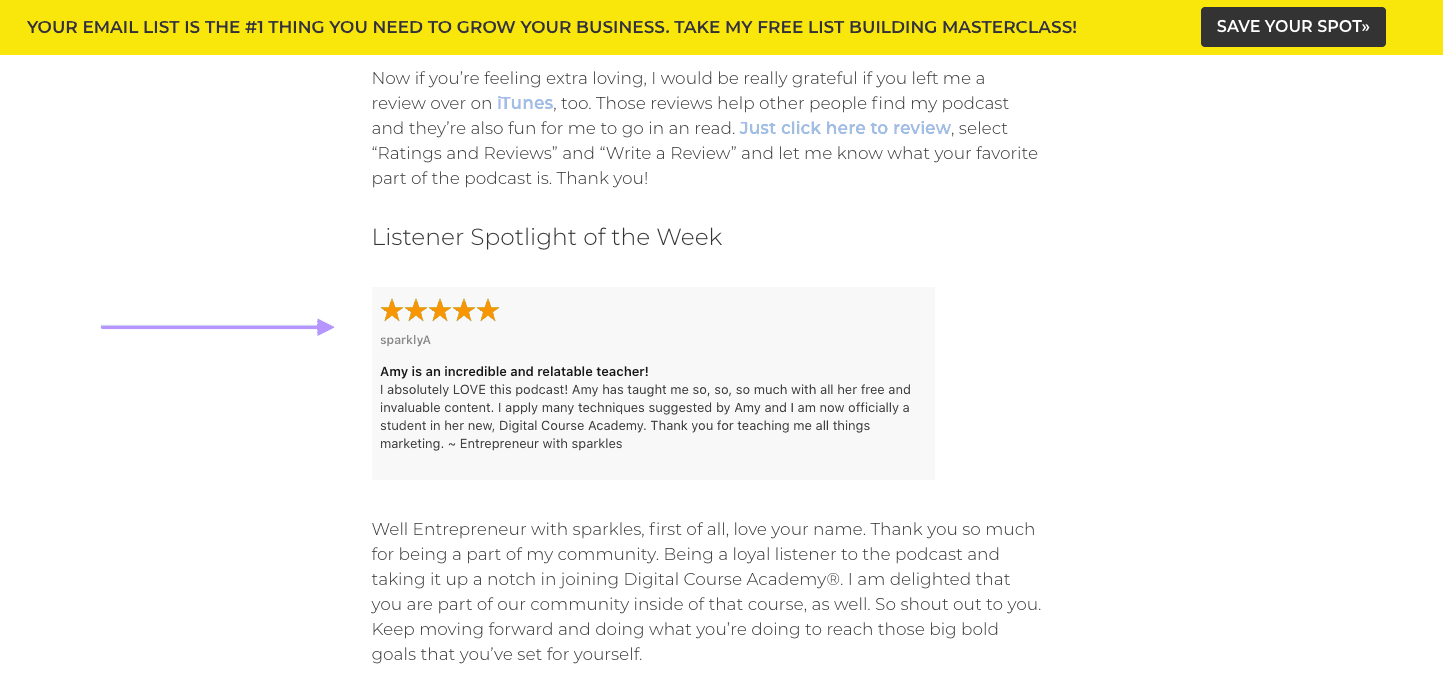 Amy Porterfield
In a sales email, like this one I received from Dan Henry, that features a testimonial video of his successful student, Victoria:
Amy Porterfield
In a sales email, like this one I received from Dan Henry, that features a testimonial video of his successful student, Victoria:
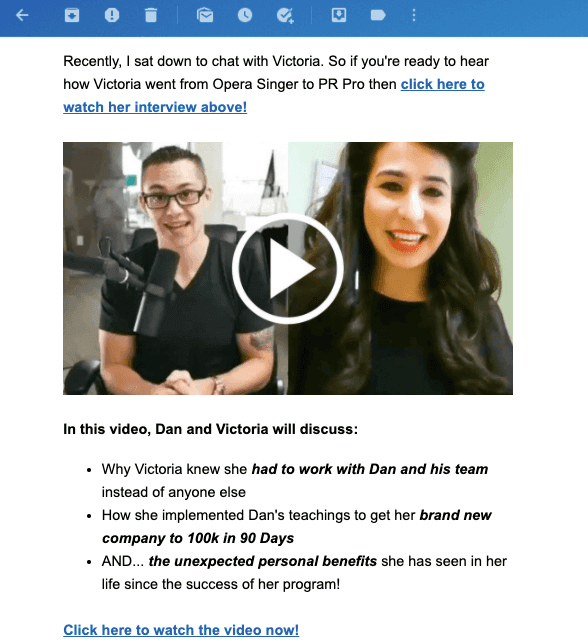 Get Clients
Even featuring a testimonial quote and review in social media ads works wonders, like this Darren Hardy Facebook ad, for example.
Get Clients
Even featuring a testimonial quote and review in social media ads works wonders, like this Darren Hardy Facebook ad, for example.
 Facebook
The moral here is to demonstrate in your piece of content the idea that your target audience member is not alone, others have been there before them, and you can help solve their problems.
On that note, no matter what format your content creation takes on, the underlying theme is a simple, but pivotal, one:
Make sure empathy is at the root of it all.
Facebook
The moral here is to demonstrate in your piece of content the idea that your target audience member is not alone, others have been there before them, and you can help solve their problems.
On that note, no matter what format your content creation takes on, the underlying theme is a simple, but pivotal, one:
Make sure empathy is at the root of it all.
Use Empathy as the Foundation for All Your Content Marketing Formats
With a significant 42% of Americans who say they’ve refused to purchase products from non-empathetic companies, you’ll be ahead of the curve by simply using emotions the right way in your marketing campaigns. If you’re wondering which emotions are likely to make content go viral, generally, the most popular emotions in content marketing are awe, laughter, amusement, and joy.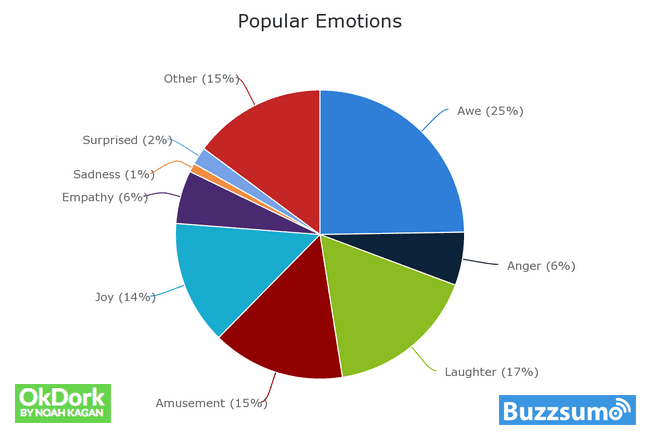 OkDork
Of course, that doesn’t mean you should appeal to these emotions in every marketing message of every piece of content, if you’re going for virality.
Your content creation should tap into the specific emotions your target audience feels in their particular pain points and relief points.
The more you can use empathy in your content creation, the more accurately you’ll connect with your target audience, and, in turn, increase sales.
Even if it’s a pain point you’re trying to agitate, let your audience know you have empathy for their negative emotions, and you can lead them to their desired positive emotions.
This will nudge their decision-making and push them to trust your brand as the solution.
At the end of the day, trust is the crux of any good decision — especially the ones that have staying power.
OkDork
Of course, that doesn’t mean you should appeal to these emotions in every marketing message of every piece of content, if you’re going for virality.
Your content creation should tap into the specific emotions your target audience feels in their particular pain points and relief points.
The more you can use empathy in your content creation, the more accurately you’ll connect with your target audience, and, in turn, increase sales.
Even if it’s a pain point you’re trying to agitate, let your audience know you have empathy for their negative emotions, and you can lead them to their desired positive emotions.
This will nudge their decision-making and push them to trust your brand as the solution.
At the end of the day, trust is the crux of any good decision — especially the ones that have staying power.
Elicit the Right Emotional Responses
Focusing your content creation on evoking emotions that support your target audience will work wonders for your business. That’s especially true if you use empathy as the foundation for making an emotional connection with your target audience. Five emotional marketing strategies to help you achieve this empathy in your content creation are:- Create a safe space for your target audience to be heard, and for their emotions to be taken seriously.
- Conduct market research to find key phrases and language that your audience uses. Then, reflect their verbiage back to them in your content creation.
- Use the power of storytelling to let your target audience know you understand their emotions, from pain point to point of relief.
- Design your graphic assets using colors and images that trigger emotions matching those of your target audience.
- Use testimonials, reviews, and social proof to assure your target audience their emotions are shared and resolved by real customers.


